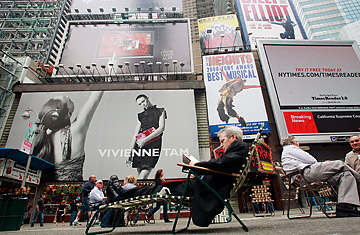
Outdoor ads are used almost everywhere in the world because of their simplicity and the relatively low cost of creating them. Current estimates are that global outdoor-advertising sales will be a $30 billion business this year. One of the great weaknesses of older ad media, like outdoor-billboard marketing and newspaper display, is that results have been nearly impossible to quantify effectively. Twitter will change that. Until recently, marketers could merely survey whether people remembered what they saw on outdoor ads and measure the number of cars that passed a sign on a given day. Using Twitter opens up the possibility to make a very large and nearly unmeasurable medium measurable. (See the best and worst Super Bowl commercials of 2009.)
Marketers using outdoor ads will have to give Twitter users an incentive to report that they have seen a billboard. A Twitter user who sees an ad for a Toyota (TM) Corolla could be encouraged to send a tweet to the local dealer in exchange for a pint of oil or a T shirt. The tweeter would obviously have to go to the showroom to get that promotional item. The same principle would apply to newspaper display ads, a shrinking category that is disappearing so fast, it is helping destroy the newspaper industry. Some display ads have coupons, but the ability of a newspaper advertiser to get reactions from consumers through Twitter help make another hard-to-measure medium at least partially interactive.
If the use of Twitter to measure these categories of marketing are even modestly successful, it could completely change the marketing methodology and advertising investments that companies are willing to make in outdoor media. That category includes billboards, telephones, taxis and public transportation. Because Twitter can be used on mobile devices as well as PCs, and since Twitter allows messages of a maximum of 140 characters, the reactions to outdoor ad messages can be instantaneous. Conversely, relying on e-mail responses or postings on MySpace or Facebook requires a much longer and more complex process for both the end user and the company. Many people will not take the time to follow through if the incentives to do so are minimal. It takes only a few seconds for a Twitter user to indicate by texting that he has seen an outdoor ad or newspaper display message.
—Douglas A. McIntyre